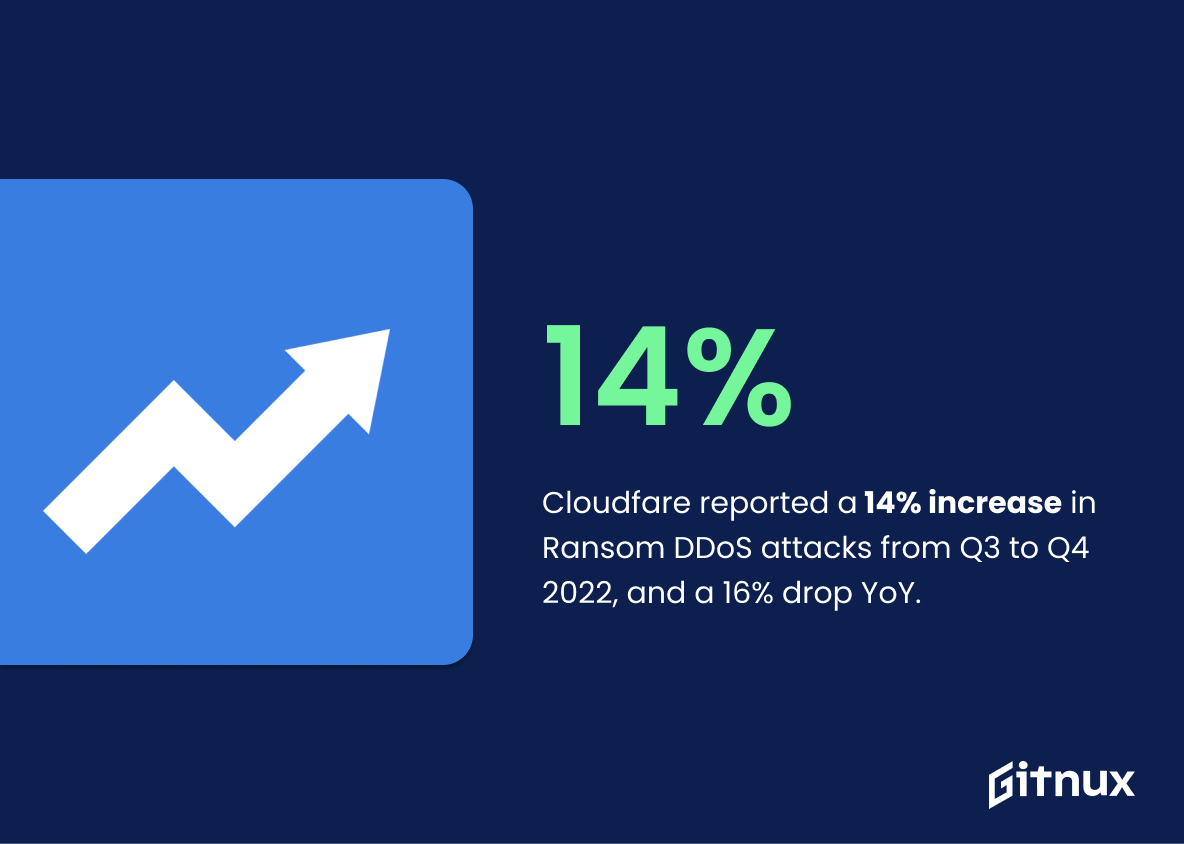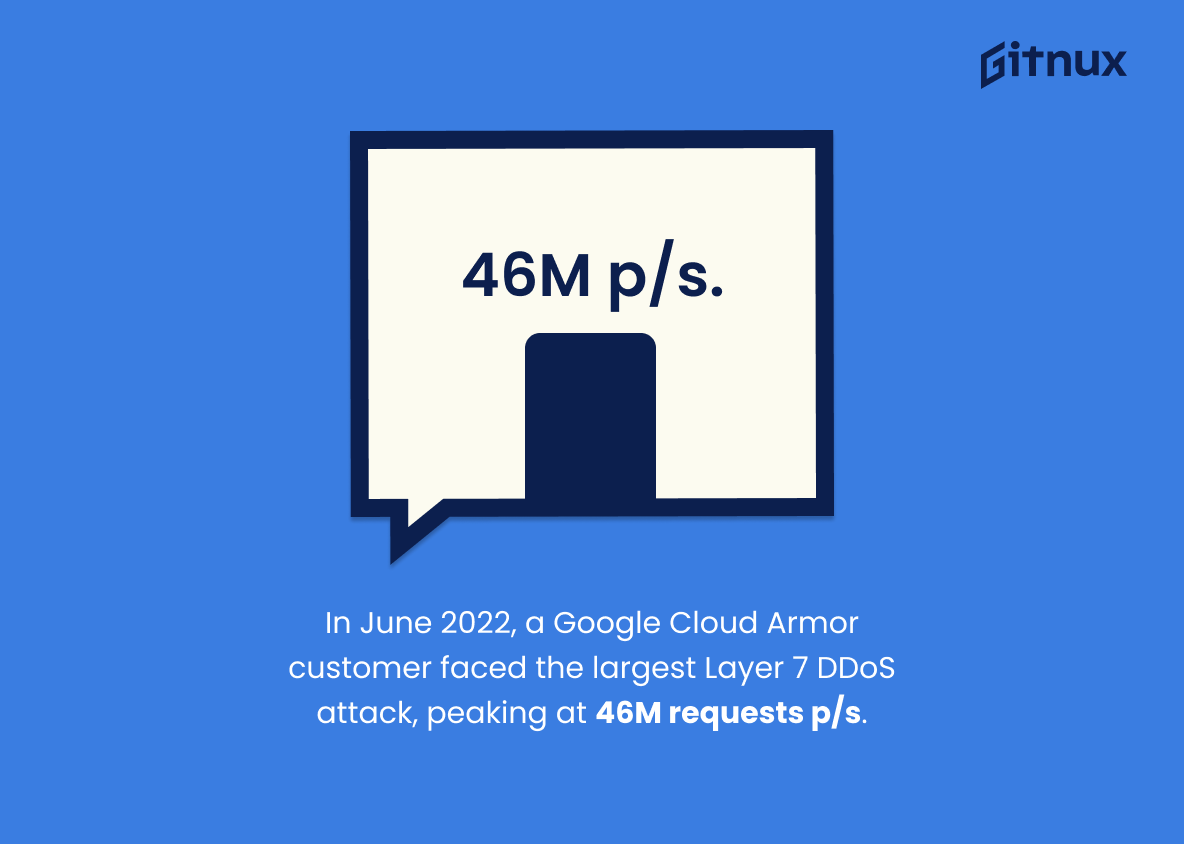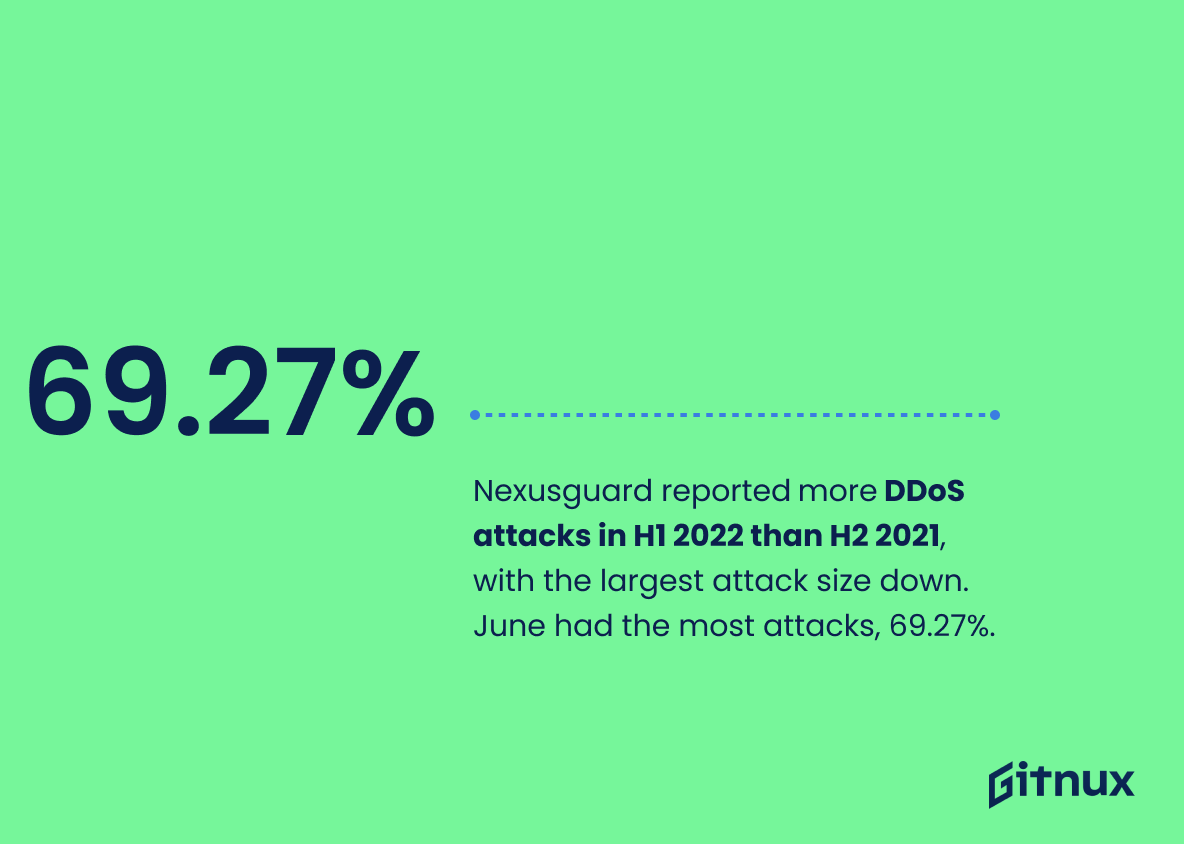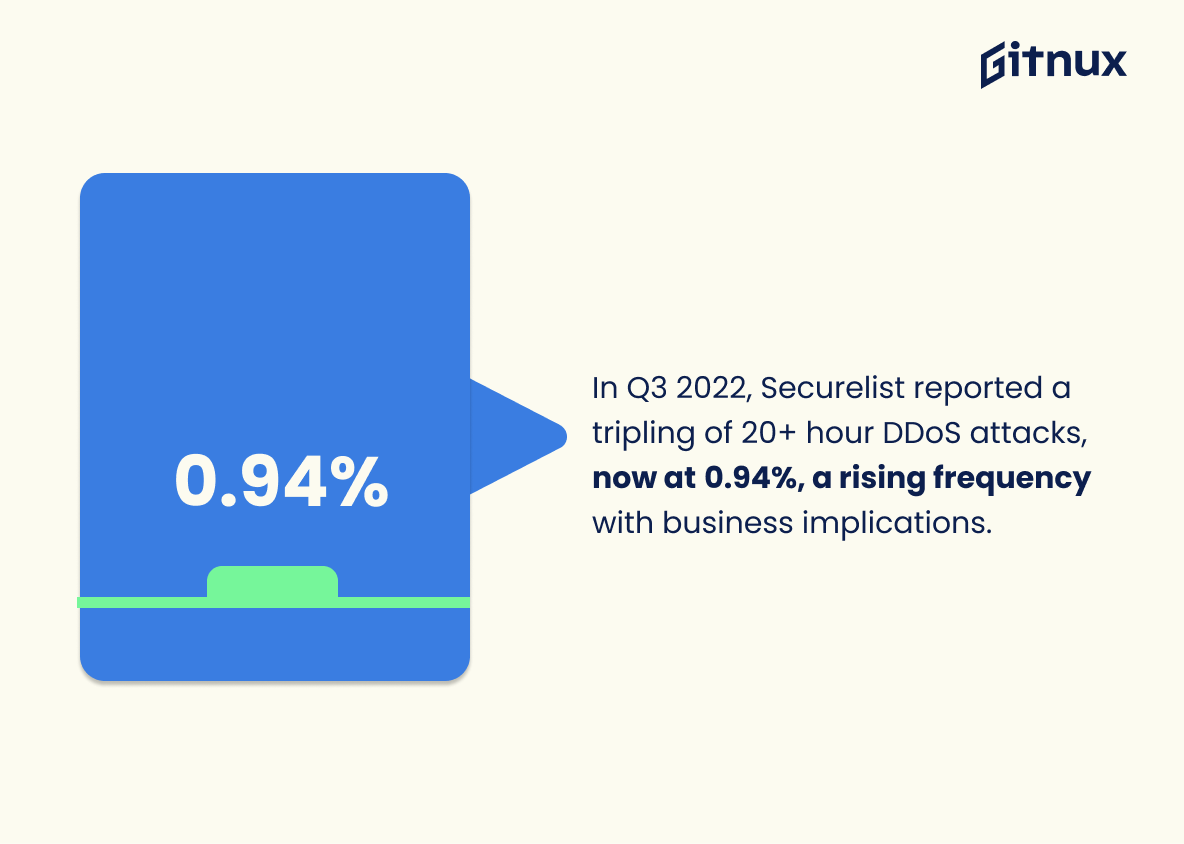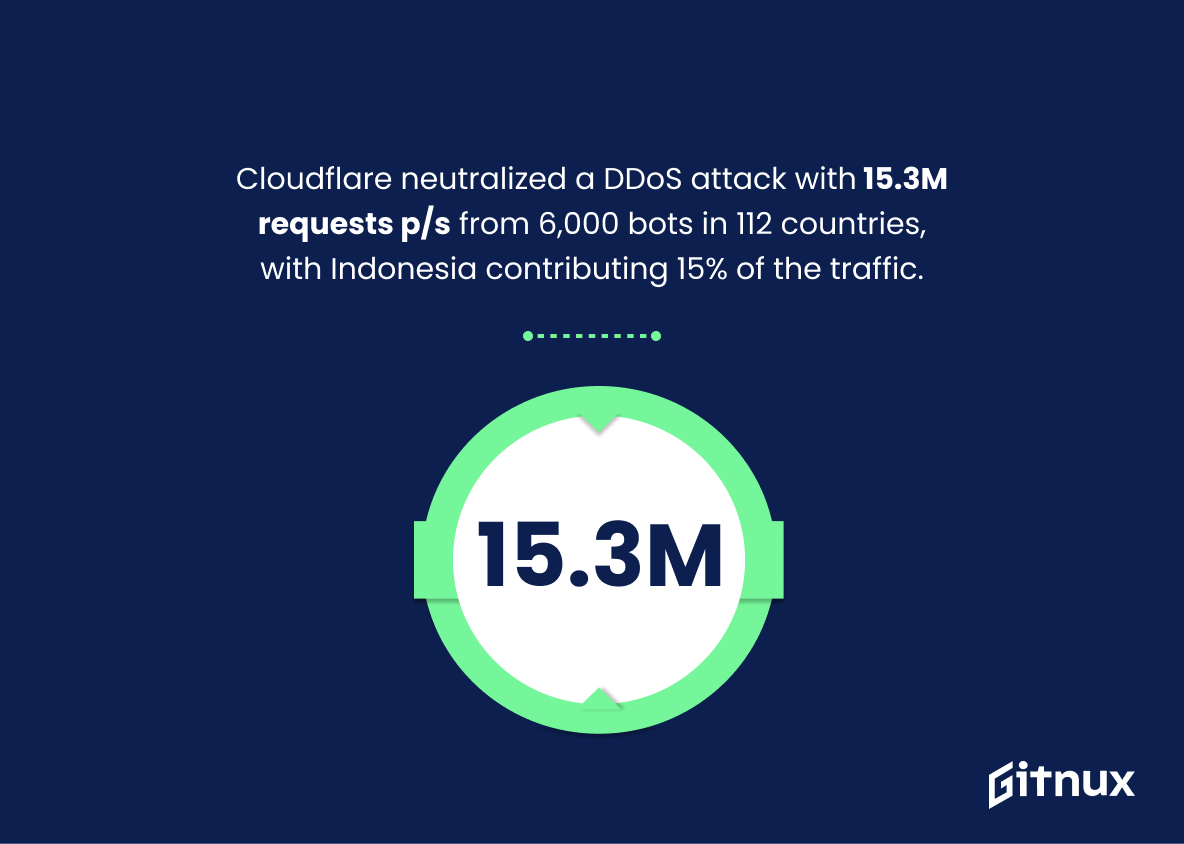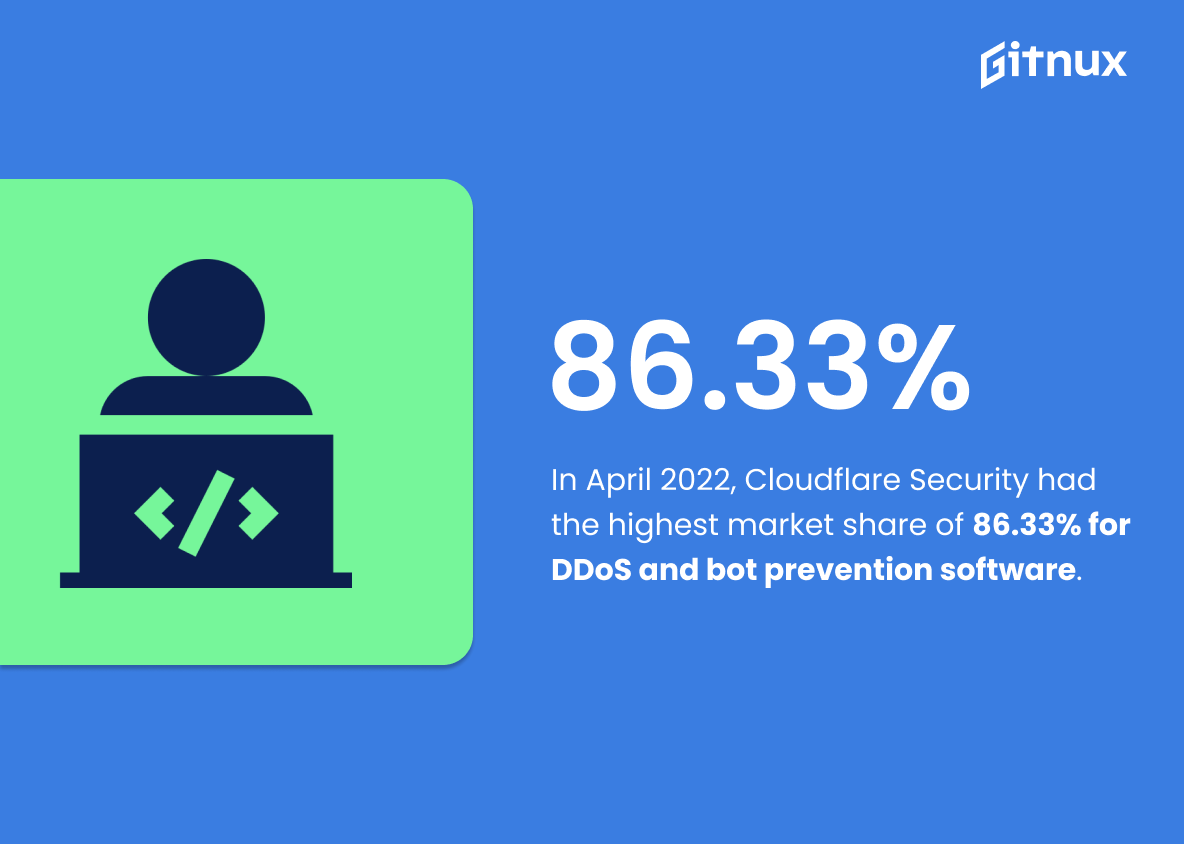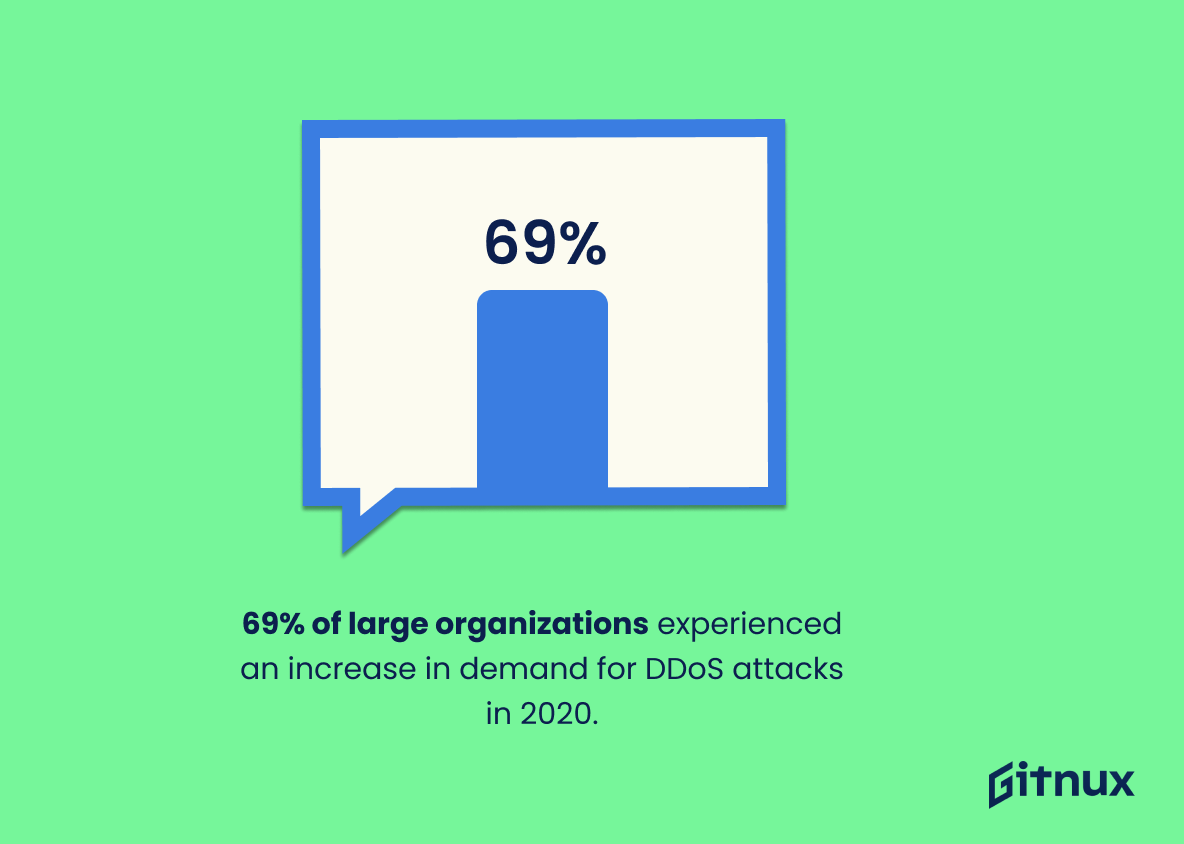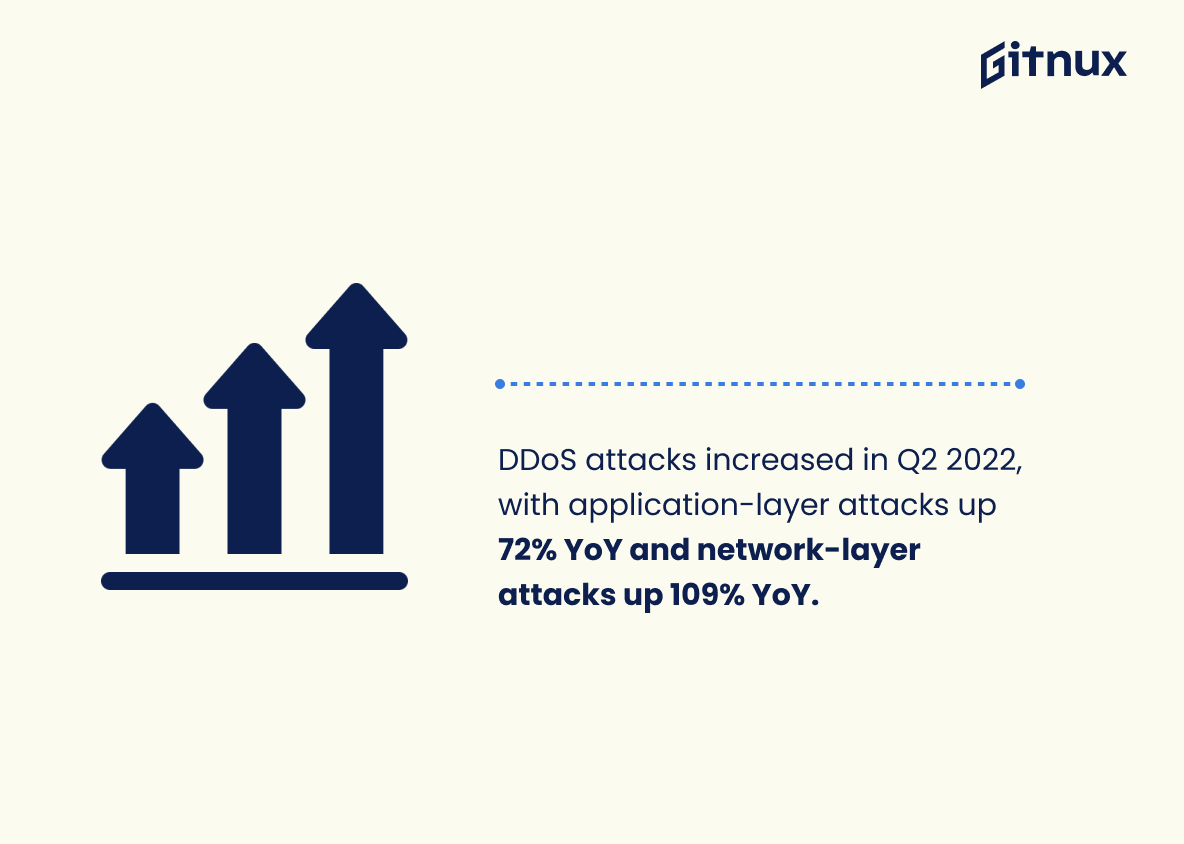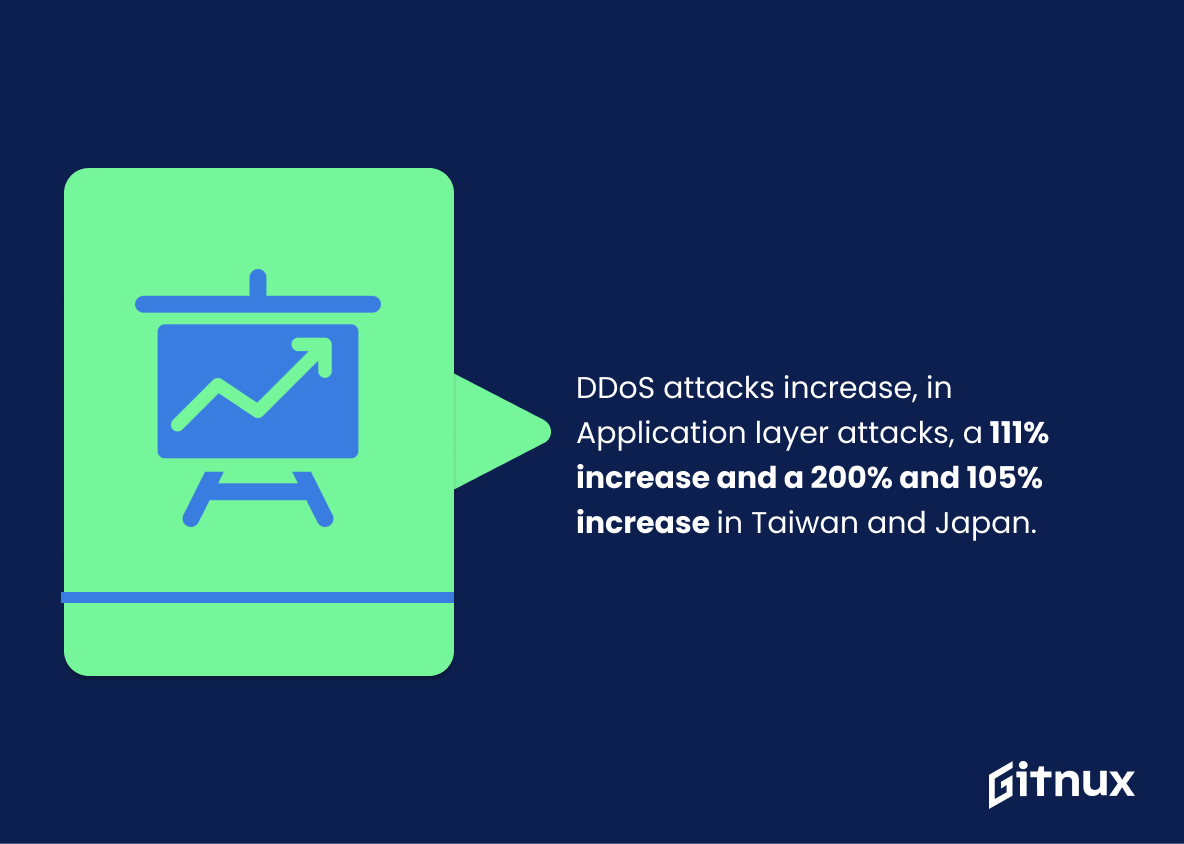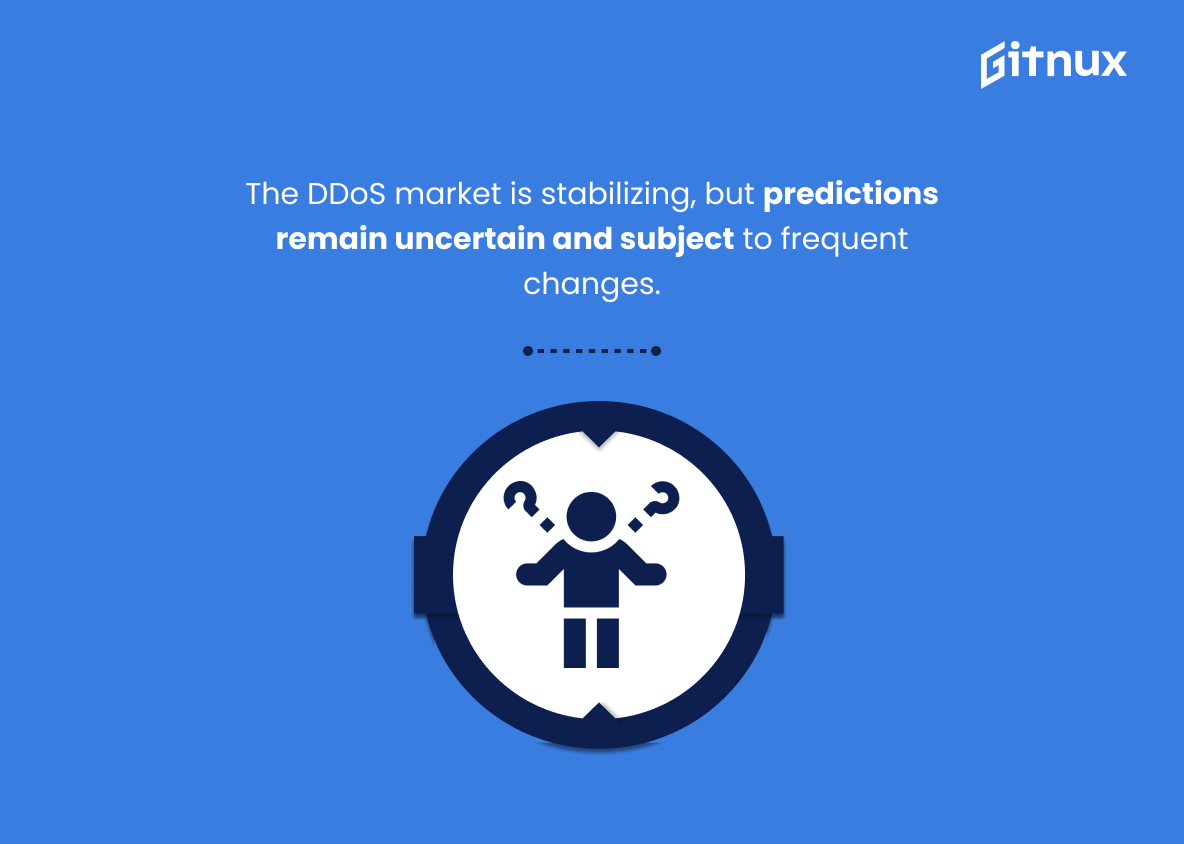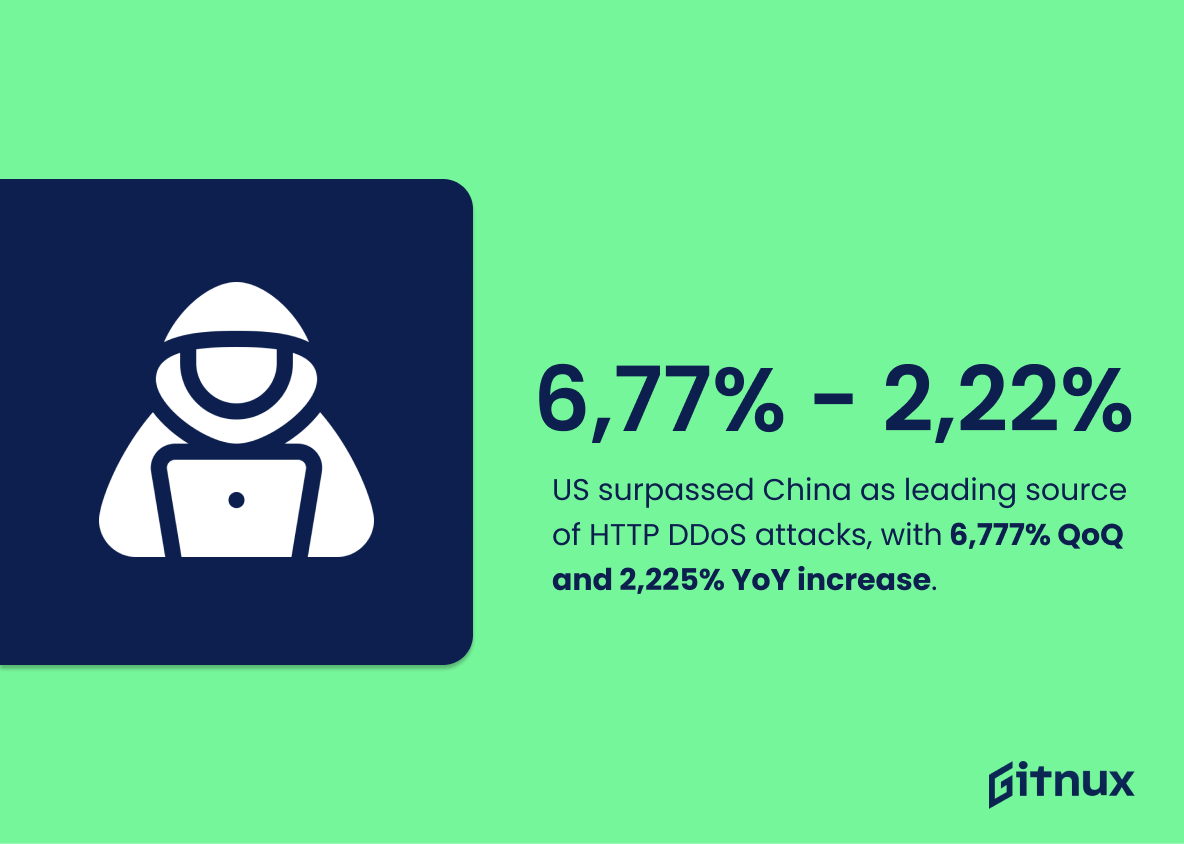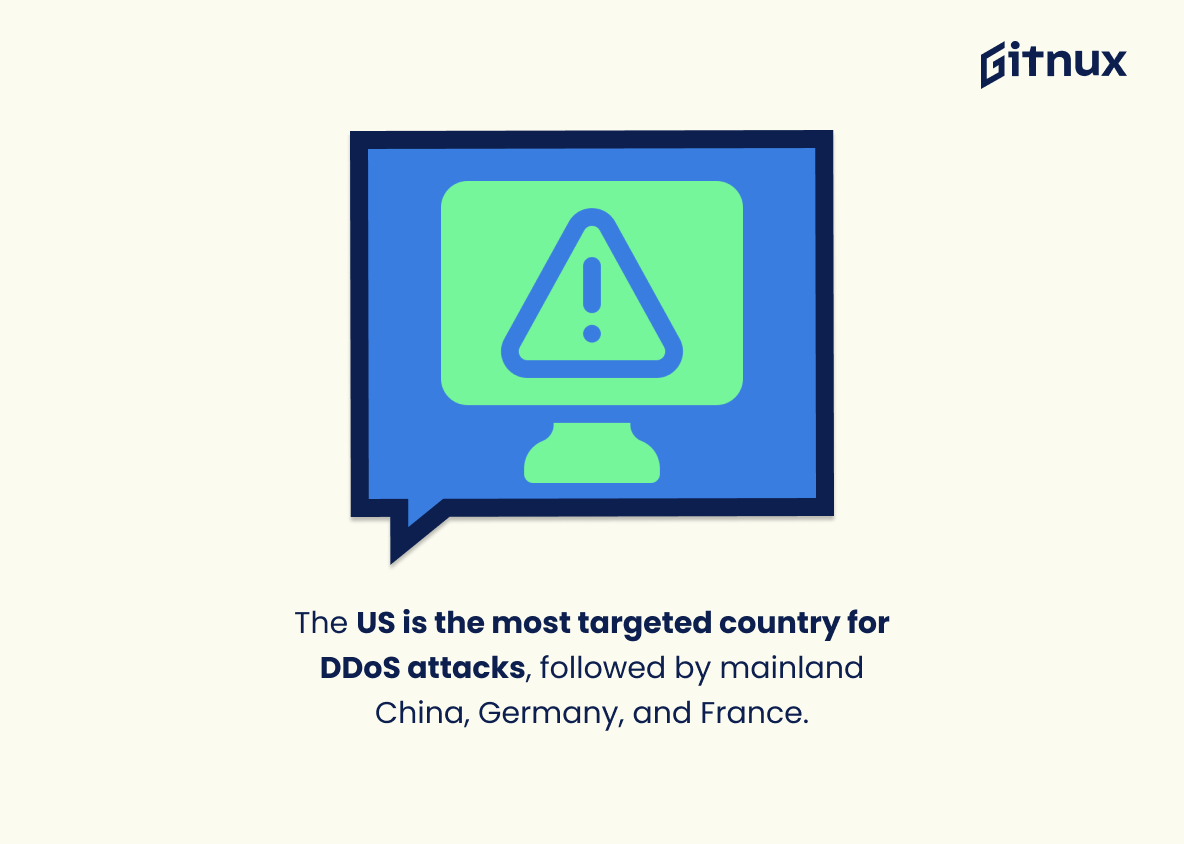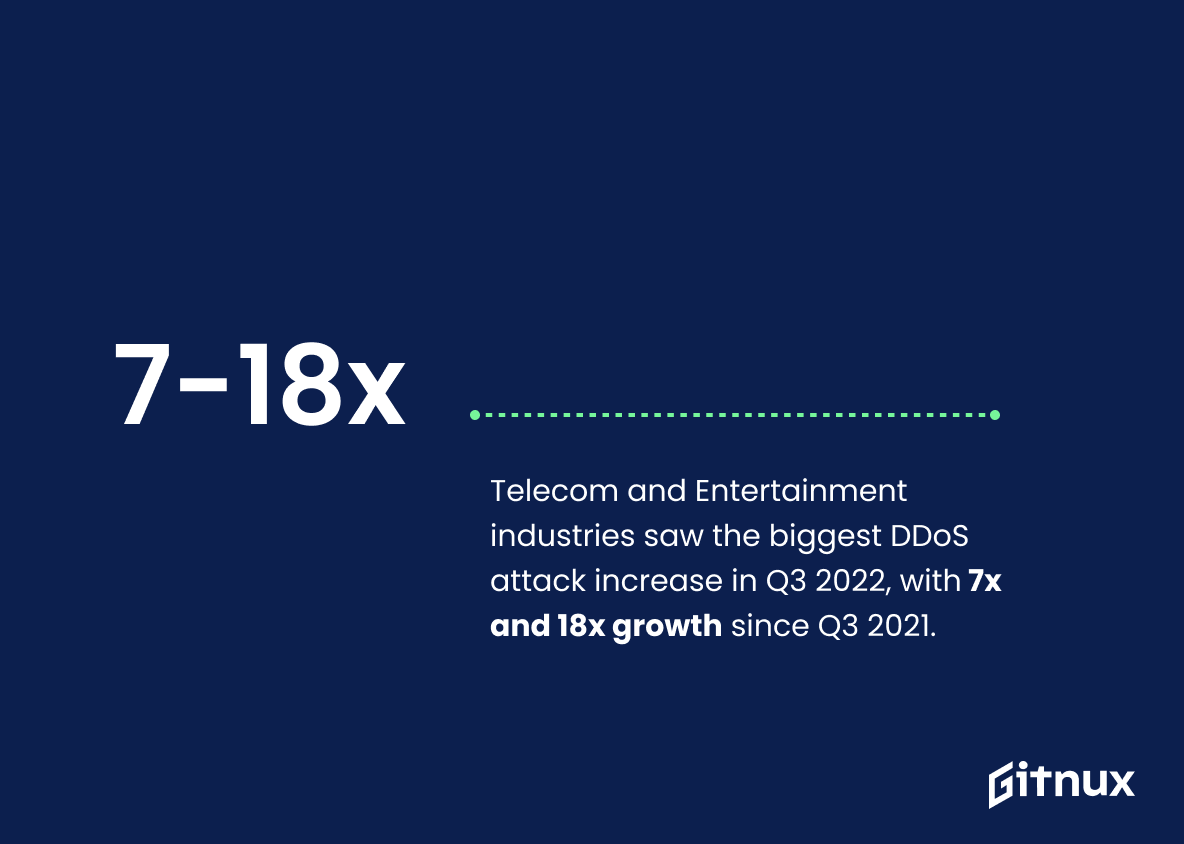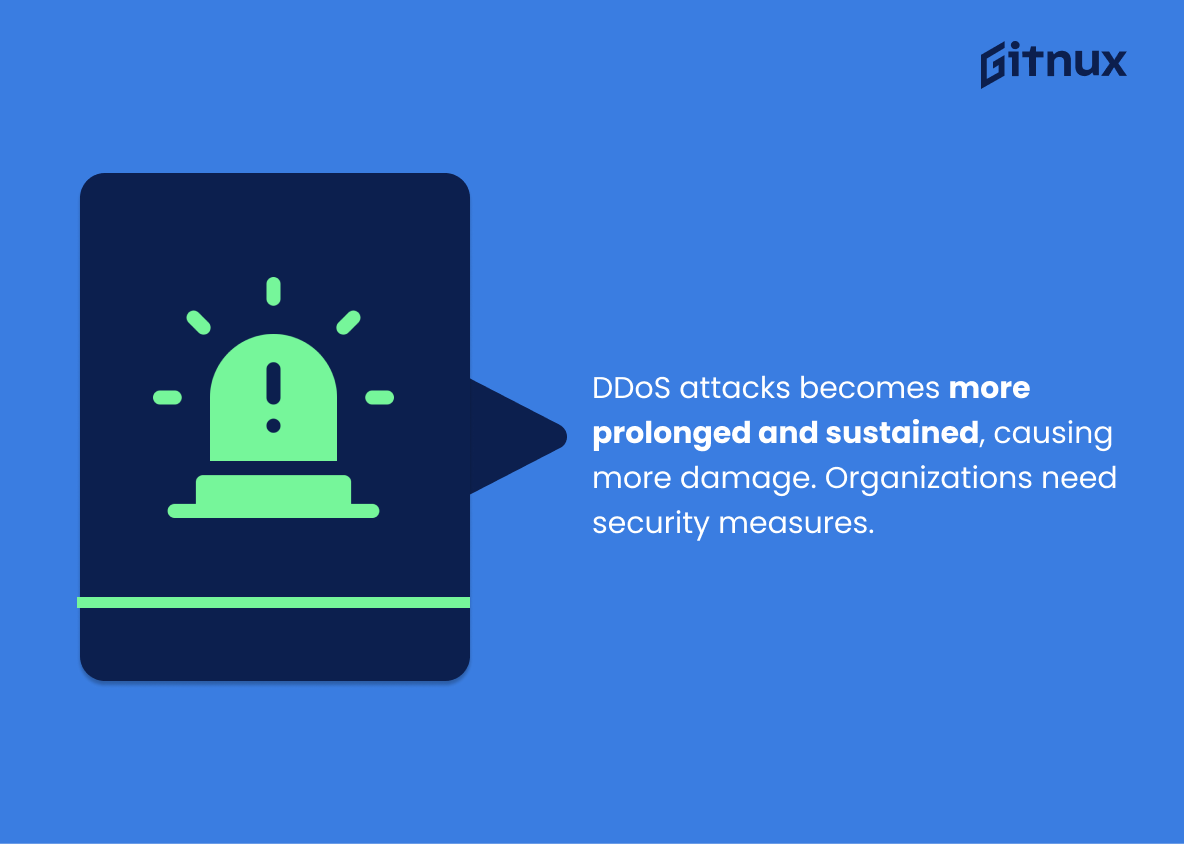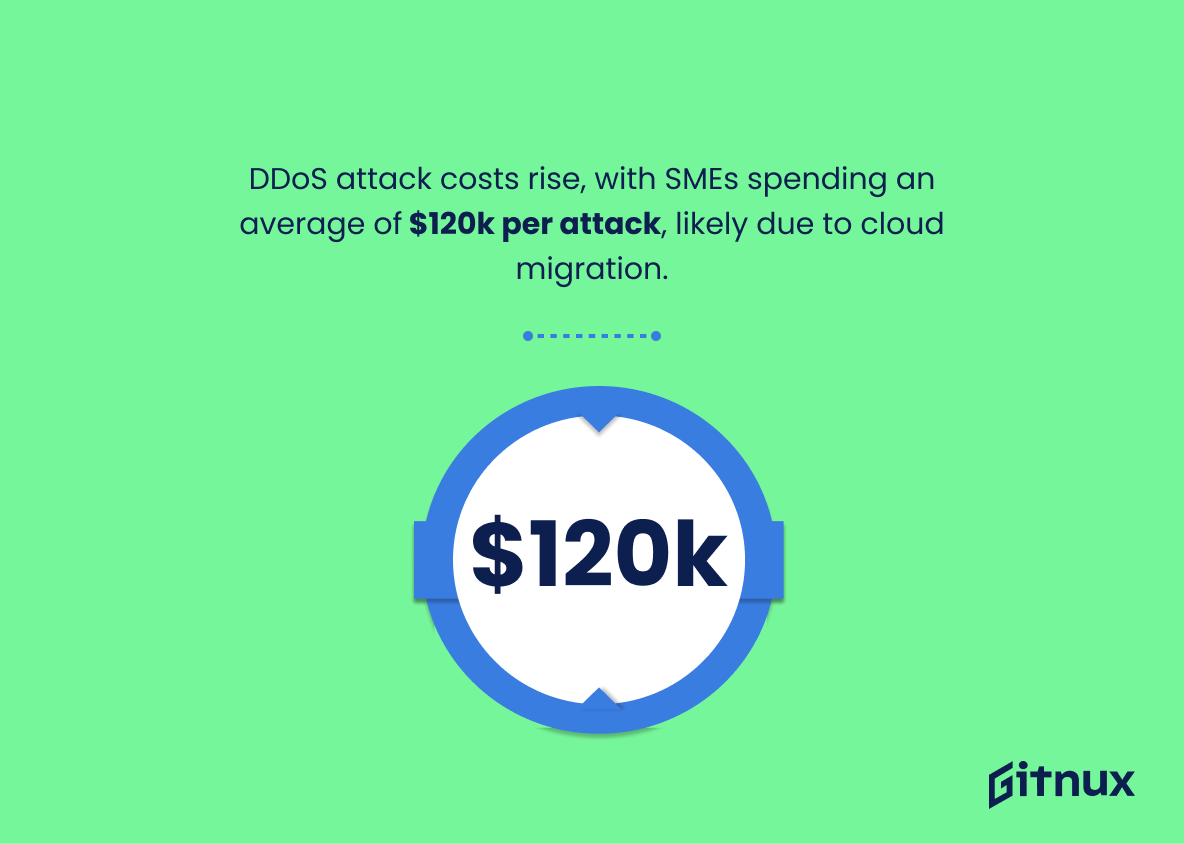DDoS (Distributed Denial of Service) attacks are a growing threat to businesses and organizations around the world. Every day, hundreds of thousands of websites and networks are targeted by malicious actors intent on disrupting services and stealing data.
In this blog post, we’ll take a look at the latest DDoS attack statistics, so you can better understand the scope of the problem and take steps to protect your organization. We’ll also discuss the different types of DDoS attacks, their common targets, and the best ways to defend against them.
DDos Attacks: The Most Important Statistics
69% of large organizations experienced an increase in demand for DDoS attacks in 2020.
DDoS attacks have been steadily increasing, particularly in Application layer attacks, with a 111% increase and a 200% and 105% increase in Taiwan and Japan, respectively.
DDos Attacks: Statistics Overview
Cloudfare reported a 14% increase in Ransom DDoS attacks from the third to fourth quarter of 2022, and a 16% drop year-over-year.
This shows the increasing trend of Ransom DDoS attacks, which can have serious implications for businesses and individuals. It is important to be aware of these trends in order to better protect against these types of attacks.
On June 1, 2022, Google Cloud Armor customer was the subject of a series of HTTPS DDoS attacks, with a peak rate of 46 million requests per second, making it the largest Layer 7 DDoS attack ever reported.
This statistic shows that DDoS attacks are becoming more frequent and larger in size. It is also very concerning because it means that organizations are increasingly vulnerable to these types of attacks, which can cause significant disruption and financial losses. Therefore, it is necessary for organizations to be aware of the potential risks posed by DDoS attacks and to take steps to protect themselves.
Nexusguard reported that DDoS attack count and average attack size increased significantly in the first half of 2022 compared to the second half of 2021, with the greatest attack size reducing by 66.82%. June had the most attacks and the highest attack count, while 69.27% of attacks were shorter than 90 minutes.
This DDos Attack Statistic is significant as it shows that those attacks are becoming more frequent and more powerful, making it important for organizations to have the right security measures in place to protect against them.
SecureList also reported that the number of sustained attacks lasting 20 hours or more tripled in Q3 2022, increasing from 0.29 to 0.94 percent, which indicates that the frequency of DDoS attacks are increasing and can have serious implications for businesses and organizations.
79% of DDoS attack traffic in the fourth quarter of 2017 was directed towards the gaming industry. This shows that the gaming industry is the most targeted industry for DDoS attacks, which means that gaming companies need to be especially vigilant in protecting their networks and systems from attack.
Cloudflare’s algorithms identified and neutralized a DDoS attack with 15.3 million requests per second from a botnet of 6,000 unique bots originating from 112 countries, with Indonesia accounting for 15% of the attack traffic.
This demonstrates the global reach of DDoS attacks and the importance of having a system in place to detect and neutralize them. It also highlights the need for organizations to be aware of the countries from which their traffic originates, as this can be an indicator of malicious activity.
Cloudflare Security had the highest market share of DDoS and bot prevention software in April 2022, accounting for 86.33%.
It displays highlights the most popular and successful DDoS and bot prevention software provider, which can be useful for businesses looking to protect themselves from DDoS attacks.
69% of large organizations experienced an increase in demand for DDoS attacks in 2020.
By deploying cloud-based security services or specialized network equipment, organizations can mitigate the risk of a DDoS attack and ensure their services remain available.
In 2022 Q2, application-layer and network-layer DDoS attacks increased by 72% and 109% YoY respectively, and attacks of 100 Gbps and larger increased by 8% QoQ, and attacks lasting more than 3 hours increased by 12% QoQ.
UDP flood is the most common DDoS tactic used by botnets, increasing to 62.53% in Q2 2022, while SYN flood stayed in second place with 20.25% and TCP flood decreased to 11.40%. This matters in the context of DDoS attack statistics because it shows the changing trends in DDoS attack tactics, which can inform cybersecurity professionals on how to best protect their networks.
DDoS attacks have been steadily increasing, particularly in Application layer attacks, with a 111% increase and a 200% and 105% increase in Taiwan and Japan, respectively.
This shows that the threat of DDoS attacks is increasing globally and that certain regions are particularly vulnerable to these attacks. Also this information can be used to inform security measures and strategies to protect against DDoS attacks.
The DDoS market is stabilizing, but predictions for the future remain uncertain and subject to frequent changes.
It means that the market is recovering from a tumultuous first half, but that it is still subject to frequent changes and predictions are uncertain. Organizations still need to remain vigilant in monitoring their networks and be prepared to respond quickly to any changes in the landscape.
The US surpassed China as the leading source of HTTP DDoS attacks, with a 6,777% quarter-over-quarter and 2,225% year-over-year increase.
The US is now the leading source of HTTP DDoS attacks, which is a major shift from the previous quarter and year. This indicates that the US is becoming a major source of malicious activity, and that organizations should be aware of the potential risks associated with DDoS attacks originating from the US.
The US is the most targeted country for DDoS attacks, followed by mainland China, Germany, and France.
The Aviation and Aerospace industry experienced the highest number of DDoS attacks, followed by the Events Services industry, which shows the industries that are most vulnerable to DDoS attacks and the need for them to take extra precautions to protect their networks.
The Telecom and Entertainment industries saw the largest increase in DDoS attacks in Q3 2022, with a 7x and 18x increase respectively since Q3 2021.
The longest attack in Q3 2022 lasted 18 days and 19 hours, almost double the second longest attack of 10 days and 1 hour, and the average duration of attacks increased to 2 hours and 2 minutes.
This shows that DDoS attacks are becoming more prolonged and sustained, which can cause more damage to the target. It also highlights the need for organizations to be proactive in their security measures to protect against DDoS attacks.
Ransom DDoS attacks increased by 11% QoQ, with application and network layer attacks also seeing a spike.
The cost of DDoS attacks is increasing as well, with SMEs spending an average of $120k per attack, likely due to companies moving to cloud systems.
This is important for companies to know because it shows the increasing financial burden of DDoS attacks on businesses, particularly SMEs. Companies must be aware of the potential costs of these attacks and take steps to protect themselves from them.
43% of organizations experience an average revenue loss of $250,000 per hour due to DDoS attacks, with 51% taking at least three hours to detect and 40% taking at least three hours to respond.
These data show the high financial cost of DDoS attacks, as well as the time it takes to detect and respond to them. This way, they can help organizations understand the potential impact of DDoS attacks and take steps to better protect themselves.
Conclusion
In conclusion, DDoS attacks are a serious threat to businesses and organizations of all sizes. The statistics show that the number of DDoS attacks is increasing, and the attacks are becoming more sophisticated and damaging.
Businesses and organizations need to take steps to protect themselves from these attacks, such as implementing proper security measures and monitoring their networks for suspicious activity. With the right precautions in place, businesses and organizations can protect themselves from the devastating effects of DDoS attacks.
References
1 – https://blog.cloudflare.com/ddos-attack-trends-for-2022-q2/
2 – https://cloud.google.com/blog/products/identity-security/how-google-cloud-blocked-largest-layer-7-ddos-attack-at-46-million-rps
3 – http://blog.nexusguard.com/threat-report/ddos-statistical-report-for-1hy-2022
4 – https://securelist.com/ddos-report-q3-2022/107860/#:~:text=In%20Q3%202022%2C%20the%20ranking,its%20share%20to%2026.96%20percent.
5 – https://www.statista.com/statistics/440600/ddos-attack-traffic-by-industry/
6 – https://blog.cloudflare.com/15m-rps-ddos-attack/
7 – https://www.datanyze.com/market-share/ddos–354
8 – https://www.statista.com/statistics/1229430/enterprise-ddos-mitigation-service-demand/
9 – https://blog.cloudflare.com/ddos-attack-trends-for-2022-q2/#:~:text=In%202022%20Q2%2C%20network%2Dlayer,Information%20Technology%20and%20Services%20industry.
10 – https://securelist.com/ddos-attacks-in-q2-2022/107025/
11 – https://radar.cloudflare.com/reports/ddos-2022-q3
12 – https://securelist.com/ddos-report-q3-2022/107860/
13 – https://radar.cloudflare.com/reports/ddos-2022-q1
14 – https://securelist.com/ddos-report-q3-2022/107860/
15 – https://radar.cloudflare.com/reports/ddos-2022-q4
16 – https://stormwall.network/blog-ddos-attacks-report-for-q3-2022
17 – https://securelist.com/ddos-report-q3-2022/107860/
18 – https://radar.cloudflare.com/reports/ddos-2022-q2
19 – https://www.lightreading.com/security/lumen-research-reveals-latest-ddos-stats-and-costs/d/d-id/783199?
20 – https://technative.io/study-shows-a-ddos-attack-can-cost-an-organization-more-than-2-5-million/
ZipDo, cited June 2023: Ddos Attack Statistics
